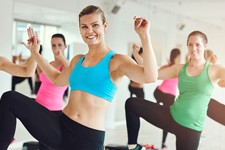
Exercises to improve balance: what kind and which benefits they provide.
When we think of physical activity, we usually think of getting a flat stomach for the summer, losing some kilos to feel better in our clothes and not being out of breath every time we climb the stairs feeling like ten years older.
It may seem strange, but we can improve all of the above if we put achieving better balance among our goals.
Why should we? Balance is something you have it or not and, anyway, being able to walk on a low wall won’t improve our life – right?
Actually it isn’t so. First of all, balance can be learnt. Genetics is very important for our ability to keep balance, but the big difference is made by specific exercises aimed at training sight, reflexes and postural muscles to work together.
Second point: being able to walk on a low wall, hopping or sitting on a ball without falling down can really improve our life.
The easiness of keeping the balance is actually related to a better posture in everything we do during the day, with the opposite parts of our body exerting the same strength without one part compensating for the other. In this way, we avoid the lack of balance that is often the cause of pains, for example, in the back, in the hips and in the joints.
A better balance also means falling down less easily, as it was proved in a study in which volunteers had to walk on a beam put on a treadmill. In these conditions, not to lose balance is basically impossible, but the people with a better control managed to recalibrate their movements within the 400 milliseconds, managing to avoid falling.
Let’s see some exercises to train our balance:
1) A recurrent advice is to practise walking heel and toe on a straight line. The gymnast Jordyn Wieber, Olympic gold medal in 2012, suggest walking this way for 3-4 metres there and back and then keep the balance with the eyes closed standing on one leg for 30 seconds.
2) A balance board may be useful, which is a board on a pivot or fulcrum. Maintaining the straight position with both feet placed on this simple tool is an effective exercise to test and improve our balance.
3) When we will are confident enough, we can increase the difficulty of the exercise on the tablet, always standing in the straight position, bouncing a ball or tossing the ball toward the wall and then catching it again.
4) The gym ball, also called fitball or swiss ball, is also useful. We can attempt to keep the balance sitting on it, first with both feet on the ground and then with one leg up.
5) Later on, we can use the ball to climb on it kneeling down. Then, a greater challenge will be, in this position, to open our arms and toss a ball from one hand to the other.


